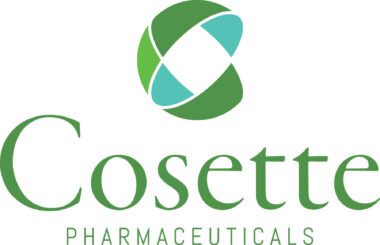Issued: 22 September 2024, Melbourne, Australia
- The Government has expanded access to GSK’s shingles vaccine, Shingrix, to cover individuals aged 18 to 64 years who are at a moderate to high risk of herpes zoster as advised by the ATAGI.1
- In some cases, the risk of developing shingles can be up to two times higher in people with immunocompromising conditions compared to those without these conditions.2
From 1 September 2024, the eligible population for Shingrix on the National Immunisation Program (NIP) will be expanded to cover more Australians aged 18 to 64 years who are considered to be at a moderate to high risk of shingles (herpes zoster), due to an underlying condition and/or immunomodulatory/immunosuppressive treatments, as advised by the Australian Technical Advisory Group on Immunisation (ATAGI).1
Shingles is a viral infection that is caused by the reactivation of the varicella zoster virus, the same virus that causes chickenpox earlier in life.3,4 It can be a painful and potentially debilitating condition, and some people may also develop post-disease complications such as post-herpetic neuralgia (PHN). 4,12
While about one in three people will develop shingles in their lifetime and nearly all adults aged 50 years and older carry the inactive virus that causes shingles, the risk of developing shingles can be up to two times higher in people with immunocompromising conditions compared to those without these conditions.2-5
Professor Paul van Buynder, public health physician and Professor in the School of Medicine at Griffith University in Queensland, said the expansion of the Shingrix NIP is very welcome news for Australians already struggling with significant health concerns, especially those between 18 and 64 years of age.
“Shingles can be a serious condition for adults who are considered to be highly immunocompromised. The shingles vaccine can help minimise the impact of this potentially debilitating disease and its complications, like post-herpetic neuralgia. Those with immunocompromised conditions should speak with their doctor or specialist for further information about their eligibility for the NIP funded shingles vaccine, and whether it is appropriate for them,” commented Professor van Buynder.
Melbourne-based Jeanette Pritchard, who lives with Rheumatoid Arthritis, which she has been managing on a treatment program with her healthcare professional since 2019, says she was concerned her Rheumatoid Arthritis pain would return after getting shingles.
“Just after Christmas in 2022, I developed shingles, and the pain was like nothing I have ever experienced.
“Before I was diagnosed with Rheumatoid Arthritis, I had pain in my small joints and some of my large joints, but I’ve been symptom free since 2022. I was really concerned when I had shingles that my Rheumatoid Arthritis pain would return because I had to pause my regular treatment program to enable my immune system to fight the shingles virus.
“Shingles was extremely painful and made it difficult to sleep, sit or even lie down. I really didn’t want to be living with the pain and discomfort of shingles as well as the fatigue, brain fog and potentially joint pain if I had a flare. It was a very anxious time.”
Some of those living with an auto-immune disease such as Crohn’s or Ulcerative colitis, also known as inflammatory bowel disease (IBD), may also be at moderate to high risk of developing shingles depending on their treatment regimen.
Leanne Raven, Chief Executive Office, Crohn’s and Colitis Australia, applauds the NIP expansion of access to the shingles vaccine.
“Australians living with auto-immune diseases such as Crohn’s or Ulcerative colitis, need as much support as possible to avoid developing conditions that can further impact their day-to-day life. This is especially important for those who have to take certain immunosuppressants, as they are at an even greater risk of developing other health conditions such as infections, or cardiovascular disease depending on their treatment.
“Conditions like shingles, which is more common in older people as well as people with a weakened immune system, can be debilitating. Crohn’s and Colitis Australia is pleased the government recognises the impact shingles can have on adults living with these auto-immune diseases where treatment may place them at moderate to high risk of shingles and is helping to provide access to prevention.”
Dr Alan Paul, Executive Country Medical Director at GSK Australia, said the Federal Government’s decision to expand NIP access to Shingrix to moderate to high-risk Australian adults echoes the sentiments of experts across the country.
“Vaccination is recognised as one of the most cost-effective public health interventions that delivers benefits in the immediate term and into the future.6 This NIP expansion is evidence that the government is committed to providing more protection for those Australian adults considered at increased risk of herpes zoster when it comes to vaccine preventable diseases like shingles.”
About GSK
GSK is a global biopharma company with a purpose to unite science, technology, and talent to get ahead of disease together. Find out more at www.gsk.com/about-us
For media enquiries please contact:
Roberta Sowden Angela Hill
0418 842 104 0466 514 894
[email protected] [email protected]
About shingles
Shingles is a viral infection that is caused by the reactivation of the varicella zoster virus, the same virus that causes chickenpox earlier in life.3,5 About one in three people will develop shingles in their lifetime and nearly all adults aged 50 years and older carry the inactive virus that causes shingles.3-,5
For people who are immunocompromised, the risk of developing shingles can be up to double that of a non-
immunocompromised individual.2 Shingles typically develops as a painful, itchy and blistering rash, on one side of the body or on the face.3,4 The pain can be described as burning, shock-like and sharp.9,10 Shingles also comes with the risk of post-disease complications, the most common being post-herpetic neuralgia (PHN).4,12
Complications from shingles, like PHN, occur more often in older people, and in people with a suppressed or deficient immune system compared to those who are not.3,5 The incidence of PHN increases with age, ranging from approximately 10% in people aged 50 to 59-years-old to up to 20% in those aged over 80 years.11
About Shingrix12
Shingrix contains the active ingredient glycoprotein E (gE) powder mixed with AS01B adjuvant
suspension. Shingrix is used to protect adults against herpes zoster (also called shingles) as well as the long-lasting nerve pain that can follow shingles called post- herpetic neuralgia or PHN.
Shingrix is indicated for:
- Adults from the age of 50 years and above
- Adults from the age of 18 years and above who are at increased risk of shingles.
*Shingrix is currently funded on the NIP for all individuals aged over 65 years, Aboriginal and Torres Strait Islander individuals aged over 50 years, and for individuals with specific high-risk conditions (haemopoietic stem cell transplant, solid organ transplant, haematological malignancy and advanced or untreated HIV).
Shingrix is a non-live vaccine. Non-live vaccines do not contain live viruses so they cannot replicate in the body and do not cause disease, even in people with weakened immune systems.13
Shingrix Important Safety Information12
Please talk to your doctor if you have any questions about your specific situation. The following are very common or common side effects that may occur after receiving Shingrix; headache, stomach and digestive complaints, muscle pain, pain, redness and swelling at the injection site, tiredness, chills, fever, injection site itching and generally feeling unwell. If any of the side effects get serious, or if you notice any side effects not listed here, tell your doctor or pharmacist. Please see Consumer Medicine Information for further information.
Additional information
In relation to this GSK media announcement, no honorarium was provided to Professor Paul van Buynder or Leanne Raven. Both have been briefed by GSK on the TGA-approved use of this product.
For information on GSK products or to report an adverse event involving a GSK product, please contact GSK Medical Information on 1800 033 109.
References
- Australian Government, Department of Health and Aged Care https://www.health.gov.au/
- Marra F et al. Open Forum Infect Dis 2020;7:ofaa005.
- Health Direct, Shingles. Available at: https://www.healthdirect.gov.au/shingles. (accessed February 2024).
- CDC. Shingles. Available at: https://www.cdc.gov/shingles/about/index.html (accessed February 2024).
- Gidding HF, MacIntyre CR, Burgess MA, Gilbert GL. The seroepidemiology and transmission dynamics of varicella in Australia. Epidemiology and Infection 2003;131:1085-9.
- Liu B et al. Epidemiol Infect 2015;143:2871-81.
- Pharmaceutical Benefits Scheme. Varicella zoster virus recombinant vaccine: Injection [1 vial] & adjuvant substance diluent [0.5 mL vial]; Shingrix® Public Summary Document. https://www.pbs.gov.au/industry/listing/elements/pbac-meetings/psd/2023-11/files/varicella-virus-vaccine-psd-nov-2023.pdf (accessed April 2024)
- Centers for Disease Control and Prevention. Shingles complications https://www.cdc.gov/shingles/about/complications.html (accessed February 2023)
- Kim HJ, et al. Subgrouping patients with zoster-associated pain according to sensory symptom profiles: A cluster analysis. Front Neurol. 2023 Feb 17;14:1137453.
- Katz, J., et al. (2004). Acute pain in herpes zoster and its impact on health-related quality of life. Clinical infectious diseases : an official publication of the Infectious Diseases Society of America, 39(3), 342– 348.
- Stein, A. N., et al. (2009). Herpes zoster burden of illness and health care resource utilisation in the Australian population aged 50 years and older. Vaccine, 27(4), 520–529
- Shingrix Consumer Medicine Information https://gsk.com.au/shingrix
- National Centre for Immunisation Research and Surveillance (NCIRS), Vaccine types and their components https://ncirs.org.au/sites/default/files/2022-12/Vaccine%20componenets%20fact%20sheet%20December%202022.pdf (accessed February 2024)
NP-AU-SGX-PRSR-240001
Date of Approval: August 2024
Trade marks are owned by or licensed to the GSK group of companies. GlaxoSmithKline Australia Pty Ltd ABN 47 100 162 481, Melbourne, VIC. ©2024 GSK group of companies or its licensor


